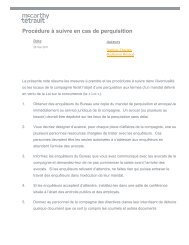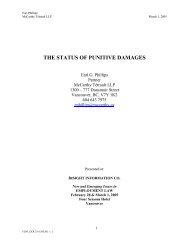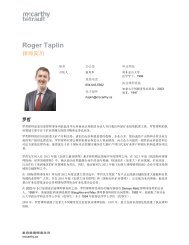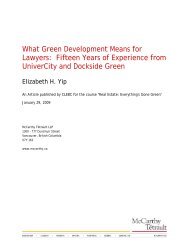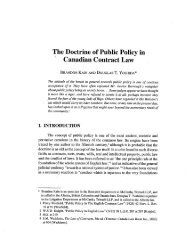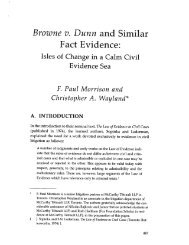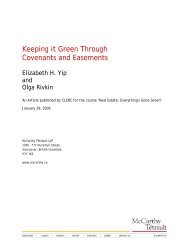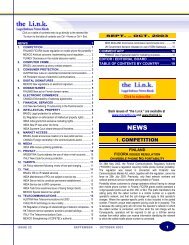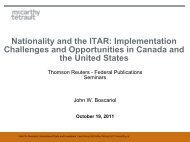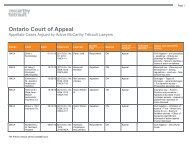Presentation Material - McCarthy Tétrault
Presentation Material - McCarthy Tétrault
Presentation Material - McCarthy Tétrault
You also want an ePaper? Increase the reach of your titles
YUMPU automatically turns print PDFs into web optimized ePapers that Google loves.
Chris Falk<br />
Stefanie Morand<br />
<strong>McCarthy</strong> Tétrault LLP<br />
not hold shares immediately prior to their redemption nonetheless falls within the scope of the<br />
words “each person” in subsection 84(3). Mr. Justice Angers rejected this interpretation. He<br />
stated that the wording in subsection 84(3) (at paragraph 63):<br />
would warrant an analysis of how the shares in question were actually redeemed, acquired or<br />
cancelled in that the method of redemption, acquisition or cancellation could have an impact on<br />
who the actual persons are who hold the shares. The manner in which each person who holds<br />
the redeemed, acquired or cancelled shares came to be in possession of the shares is not what<br />
needs to be determined under subsection 84(3). (emphasis added)<br />
In other words, Mr. Justice Angers rejected the Crown’s argument that subsection 84(3) could<br />
apply to deem someone other than the shareholder to have received a dividend on the<br />
redemption.<br />
Accordingly, while 2011 amendments to section 120.4 have rendered obsolete the planning<br />
which enabled Mr. McClarty to split income with his minor children, the decision in McClarty<br />
Family Trust is nonetheless of current relevance for the Tax Court of Canada’s rejection of the<br />
Crown’s attempt to rely on RMM to support what, in the authors’ view, is an unduly broad<br />
interpretation of section 84. The decision is also noteworthy for its taxpayer-friendly GAAR<br />
analysis.<br />
The Crown has not appealed the decision.<br />
MacDonald 36<br />
In MacDonald, the issue was whether subsection 84(2) applied to recharacterize as dividends<br />
amounts received by a former shareholder qua creditor in the context of a surplus strip. Mr.<br />
Justice Hershfield held in favour of the taxpayer and noted that he favoured the approach to<br />
subsection 84(2) adopted in McNichol 37 to that adopted in RMM.<br />
The decision in MacDonald is especially noteworthy since:<br />
• the transactions implemented were similar to those used in pipeline planning;<br />
• the Court devotes nearly a dozen paragraphs to pipeline planning specifically and is<br />
critical of the CRA’s recent position; and<br />
• the Court concludes that the GAAR – and not subsection 84(2) – is the appropriate<br />
provision to consider.<br />
More generally, the decision is of interest for the Court’s overall concern for fairness in<br />
determining whether GAAR should apply, as well as for its acceptance, on the facts in issue, of<br />
the use of an accommodation party to permit a shareholder to, in effect, indirectly access a<br />
corporation’s retained earnings as a capital gain rather than as dividends.<br />
36<br />
37<br />
Supra, note 5. For a more detailed discussion of the decision in MacDonald, see the authors’ article “Pipeline<br />
Planning Alive and Well After All” (July 5, 2012) 2104 Tax Topics 1-8. Many of the comments that follow are<br />
based on that article.<br />
McNichol v. The Queen, 97 DTC 111 (TCC) [“McNichol”].<br />
560600/422632<br />
MT DOCS 11864055v1G<br />
11



